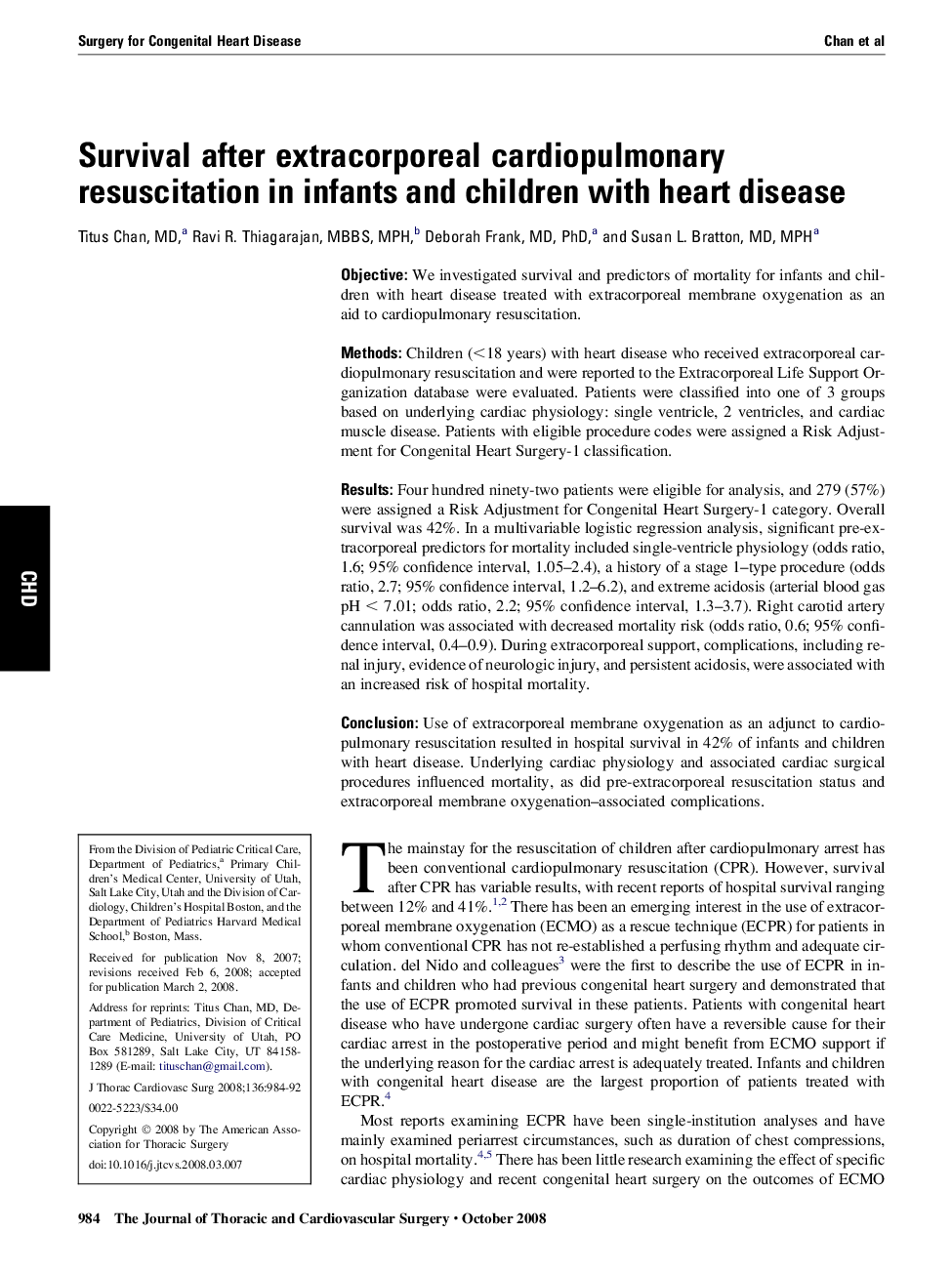| Article ID | Journal | Published Year | Pages | File Type |
|---|---|---|---|---|
| 2982803 | The Journal of Thoracic and Cardiovascular Surgery | 2008 | 9 Pages |
ObjectiveWe investigated survival and predictors of mortality for infants and children with heart disease treated with extracorporeal membrane oxygenation as an aid to cardiopulmonary resuscitation.MethodsChildren (<18 years) with heart disease who received extracorporeal cardiopulmonary resuscitation and were reported to the Extracorporeal Life Support Organization database were evaluated. Patients were classified into one of 3 groups based on underlying cardiac physiology: single ventricle, 2 ventricles, and cardiac muscle disease. Patients with eligible procedure codes were assigned a Risk Adjustment for Congenital Heart Surgery-1 classification.ResultsFour hundred ninety-two patients were eligible for analysis, and 279 (57%) were assigned a Risk Adjustment for Congenital Heart Surgery-1 category. Overall survival was 42%. In a multivariable logistic regression analysis, significant pre-extracorporeal predictors for mortality included single-ventricle physiology (odds ratio, 1.6; 95% confidence interval, 1.05–2.4), a history of a stage 1–type procedure (odds ratio, 2.7; 95% confidence interval, 1.2–6.2), and extreme acidosis (arterial blood gas pH < 7.01; odds ratio, 2.2; 95% confidence interval, 1.3–3.7). Right carotid artery cannulation was associated with decreased mortality risk (odds ratio, 0.6; 95% confidence interval, 0.4–0.9). During extracorporeal support, complications, including renal injury, evidence of neurologic injury, and persistent acidosis, were associated with an increased risk of hospital mortality.ConclusionUse of extracorporeal membrane oxygenation as an adjunct to cardiopulmonary resuscitation resulted in hospital survival in 42% of infants and children with heart disease. Underlying cardiac physiology and associated cardiac surgical procedures influenced mortality, as did pre-extracorporeal resuscitation status and extracorporeal membrane oxygenation–associated complications.
